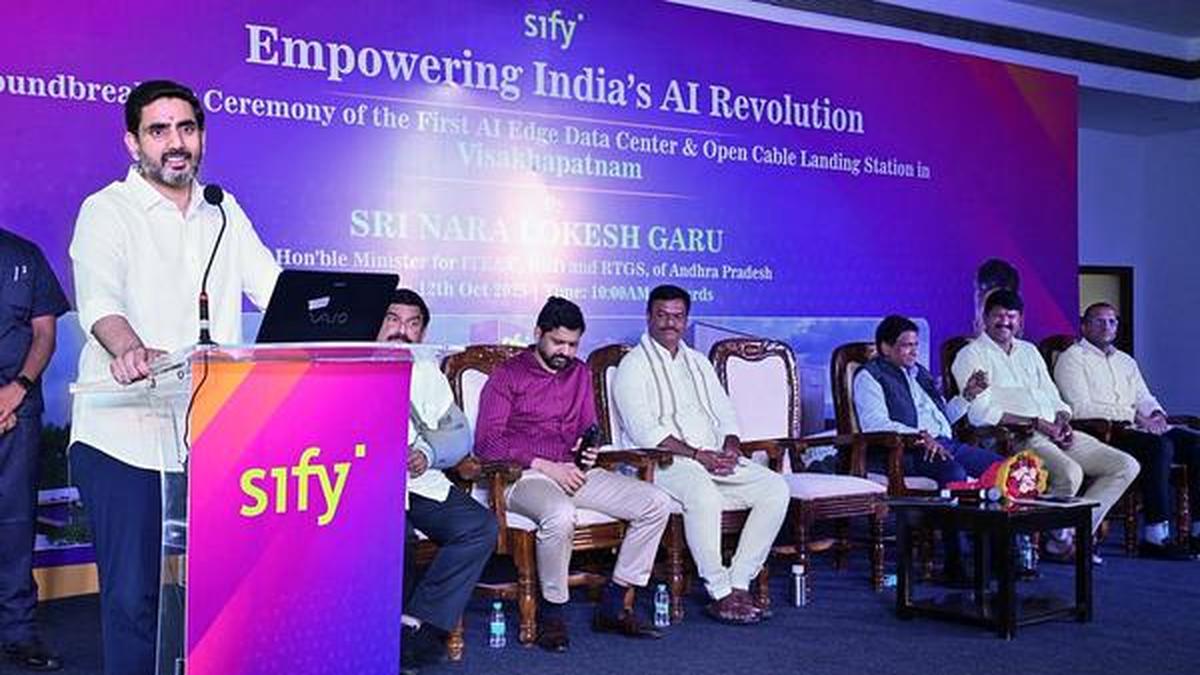Last Updated:October 13, 2025, 10:19 IST
Once the Delhi-Gurugram route is ready, the Namo Bharat corridors will redefine how people move across the National Capital Region – offering a faster commute than Delhi Metro.

Trains on the Namo Bharat rail corridor are expected to run at the speed of up to 180 km/hr. (Image: PTI File)
The regional rapid transport system (RRTS) project from Sarai Kale Khan to Shahjahanpur-Behror in Rajasthan, connecting Gurugram on the way, has reached a decisive stage as the tenders have been issued to hire a General Consultant (GC) who will act as the technical advisor, project manager, and quality controller during the design and construction phases to the authorities.
The move marks the first concrete step towards linking Meerut and Gurugram via Sarai Kale Khan station in Delhi through a 100-minute high-speed commute.
The GC, appointed by the National Capital Region Transport Corporation (NCRTC), will have to provide expert consultancy services including efficient planning, design, procurement of civil and architectural works – elevated viaducts and stations; depot and underground stations; tunnels, ramps and other infrastructures – and planning required for the works.
“The General Consultant will be a proactive partner of NCRTC in successful implementation of the project," the documents, seen by News18, read.
A senior NCRTC official involved in operating plans explained that the consultant will be the “eyes and ears" of the NCRTC on the ground, ensuring the project meets global benchmarks.
“The GC will review and validate the DPR and designs prepared apart from helping the NCRTC in evaluating tenders for construction packages – civil, system, traction, and stations," they said, demanding anonymity.
The consultant will also coordinate interfaces between multiple contractors — civil, track, power, signalling, telecom, AFC, and rolling stock.
The duration of the consultancy services will be five years (60 months), ending with the completion of all services provided by the consultant up to the revenue opening date of the last section of the project for implementation.
“The duration may be extended if required, subject to mutual agreement," the document reads.
The project awaits final Union Cabinet approval, expected within weeks, paving the way for construction bids next year.
Why RRTS Matters?
The RRTS, also termed Namo Bharat, is a high-speed rail-based commuter transit service first started in India in Ghaziabad in 2023.
In simple terms, it is a new train service falling between the Metro and the railways. It is the best of both, planned to connect regional nodes in NCR.
When compared to Metro, RRTS caters to passengers looking to travel a relatively longer distance with fewer stops and at higher speed. When compared to conventional railway, it is faster, more reliable and frequent.
The project was initially planned in 1998-99 for Delhi and towns around it for a reliable, high frequency, and point-to-point regional travel at high speed along dedicated pathways.
Meerut–Delhi-Gurugram journey in 100 minutes
Eight RRTS corridors have been proposed between Delhi and towns near it. Three of these – Delhi-Ghaziabad-Meerut; Delhi-Gurugram-SNB- Alwar; and Delhi-Panipat-Karnal have been prioritised for the implementation in the first phase.
The yet to be operational Sarai Kale Khan RRTS station, which awaits inauguration, will be a major interchange station for the three RRTS corridors.
A major section of the Delhi-Meerut RRTS is already operational. Once the Delhi-Gurugram route is ready, the Namo Bharat corridors will redefine how people move across the National Capital Region – offering a faster commute than Delhi Metro.
Currently, the fastest way to reach Gurugram from Meerut, Ghaziabad or East Delhi is through the Blue Line metro and interchanging to Yellow in between.
With RRTS, a commuter from Meerut will be able to reach Gurugram in just about 100 minutes, with seamless interchange at Sarai Kale Khan – nearly the same time the Metro takes just from Vaishali to IFFCO Chowk today, the official quoted above added – subject to final service plans and commissioning of both corridors.
Once fully operational, the Meerut-Delhi journey in RRTS will take about 50 to 55 minutes. There are no official details about the travel time between Delhi and Gurugram, however, the official said it is expected that the journey in RRTS could be completed in about 40 to 45 minutes.
The Metro and RRTS can be compared in terms of average speed. While RRTS tracks have an operational speed of 160 kmph, these are designed for 180 kmph. Delhi Metro has an average operating speed of about 50 km/h – the Airport Express Line reaches a top speed of 120 km/h, while most other lines have a maximum speed of 80 km/h. Also, the Metro has more stoppages than the RRTS.
Currently, RRTS and Metro have two common stations in Delhi – New Ashok Nagar and Anand Vihar. Metro takes about 30 minutes and Rs 32 to cover the distance – the passenger needs to change the train as there is no direct link between the two stations. The journey with RRTS only takes six minutes, costing Rs 30.
Delhi-Gurugram-Alwar RRTS: Route and Alignment
The Delhi-Gurugram-Alwar RRTS is planned to be implemented in three stages: Delhi – Gurugram – Rewari – SNB Urban Complex; from SNB to Sotanala; and from SNB to Alwar.
In 2018, the corridor was planned to be constructed at a base construction cost of Rs 25,000 crore.
The Detailed Project Report (DPR) for Namo Bharat corridor between Sarai Kale Khan (Delhi) and SNB (Shahajahanpur – Neemrana – Behror) was approved by NCRTC Board of Directors in December 2018. The Governments of Haryana and Rajasthan had approved the DPR in February 2019 and June 2019, respectively. The DPR was revised after changes proposed in the alignment, stations and other technical parameters.
The corridor is 36 per cent underground (38 km) and 64 per cent elevated (67 km) out of the total 105 km length.
The proposed alignment of the corridor starts from Sarai Kale Khan Namo Bharat Station in Delhi – the last station for the Meerut-Delhi RRTS. The alignment gets underground as it will cross proposed stations at INA, Munirka and Aerocity in Delhi.
After crossing Delhi-Haryana Border along NH-48, the underground alignment reaches the proposed Cyber City Station.
The alignment gets elevated as it crosses the IFFCO Chowk intersection of NH-48 with MG Road. The route again gets underground before Rajiv Chowk station in Gurugram and continues underground for Honda Chowk, Kherki Daula and Manesar.
The alignment gets elevated before reaching the proposed Panchagon station. Further the alignment continues to run elevated passing through areas with stations at Bilaspur chowk, Dharuhera and Bawal before ending at SNB. In addition, two stations (MBIR & Rewari) will be developed in future.
Beyond easing commutes, the Namo Bharat corridors are set to become a catalyst for regional development, unlocking economic growth along the route while reducing congestion on Delhi roads and Metro lines. The arrival of RRTS marks a new chapter in India’s high-speed urban transit journey.

Nivedita Singh is a data journalist and covers the Election Commission, Indian Railways and Ministry of Road Transport and Highways. She has nearly seven years of experience in the news media. She tweets @nived...Read More
Nivedita Singh is a data journalist and covers the Election Commission, Indian Railways and Ministry of Road Transport and Highways. She has nearly seven years of experience in the news media. She tweets @nived...
Read More
First Published:
October 13, 2025, 10:19 IST
News india Meerut-Gurugram In 100 Minutes: Delhi-SNB Namo Bharat Corridor Takes First Step | Exclusive
Disclaimer: Comments reflect users’ views, not News18’s. Please keep discussions respectful and constructive. Abusive, defamatory, or illegal comments will be removed. News18 may disable any comment at its discretion. By posting, you agree to our Terms of Use and Privacy Policy.
Read More
.png)
 21 hours ago
18
21 hours ago
18








 English (US) ·
English (US) ·